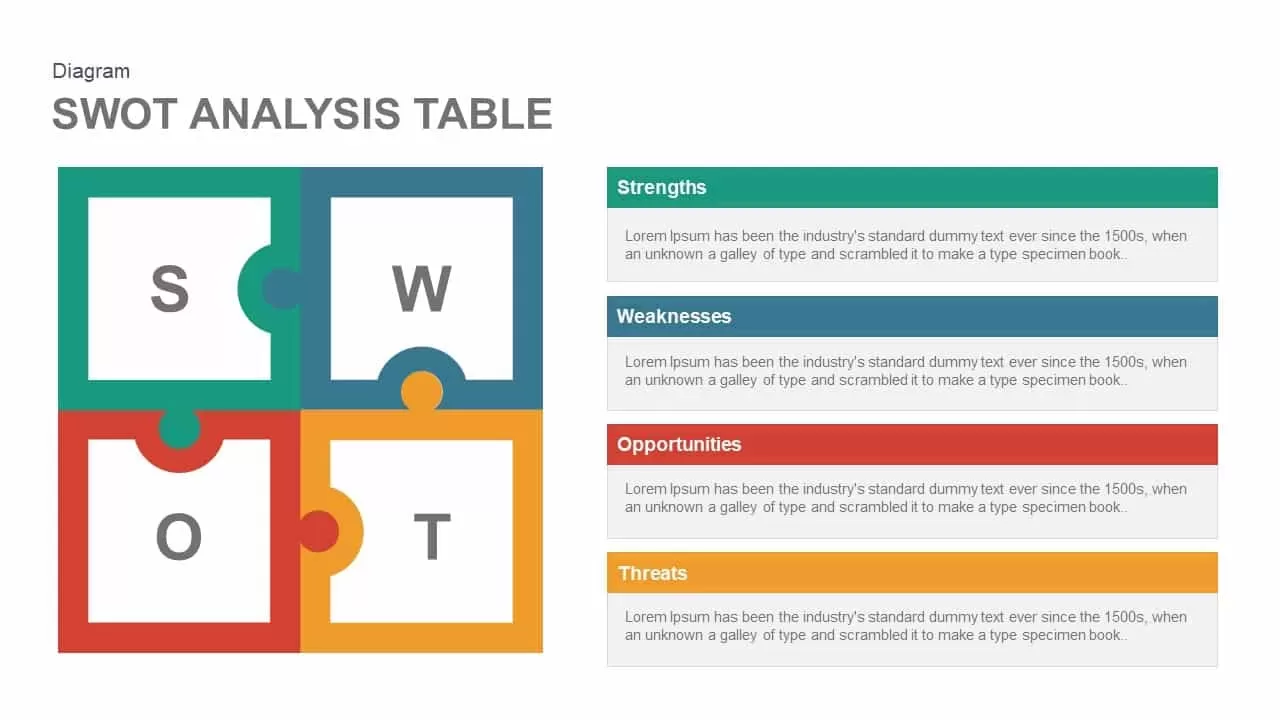SWOT Analysis Table Keynote and Powerpoint template

Leverage this jigsaw puzzle SWOT analysis table to articulate your organization’s strategic position with clarity and visual intrigue. The slide features a four-piece puzzle graphic on the left, each piece representing a SWOT quadrant—Strengths (green), Weaknesses (teal), Opportunities (red), and Threats (orange)—linked via matching colors to corresponding text tables on the right. Each table header is accentuated with a bold, colored band above a clean text panel, allowing you to insert key insights, metrics, or bullet points. The crisp typography, flat icons, and white background ensure that data remains the focal point, while the puzzle motif reinforces the interconnection of factors. Fully editable in PowerPoint and Google Slides, this template includes master slides, customizable fonts, and easy-to-move elements for rapid adaptation to corporate branding or presentation themes.
Interlocking puzzle connectors highlight quadrant relationships, reinforcing a holistic view of internal and external factors. Each table supports bullet points and narrative content, with customizable fonts and bullet styles for clarity. Add icons or subtle drop shadows to enhance visual hierarchy. Whether for investor pitches, team workshops, or internal audits, this diagram balances aesthetic appeal with practical flexibility.
Who is it for
This template is ideal for strategic planners, business consultants, and marketing leaders who need to conduct and present SWOT evaluations. Executives, project managers, and academic presenters can also use this design to structure boardroom discussions, stakeholder workshops, or classroom lectures on competitive analysis and risk assessment.
Other Uses
Beyond classic SWOT assessments, repurpose this layout to map risk registers, competitive landscapes, project retrospectives, or quarterly performance reviews. Use each quadrant to compare product lines, customer segments, departmental goals, or market scenarios. Simply update the labels, swap colors, and adjust text placeholders to fit topics such as GAP analysis, PEST analysis, or four-quadrant frameworks for decision making.
Login to download this file

















































